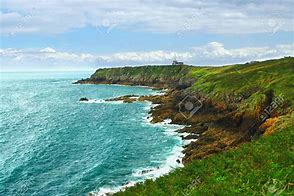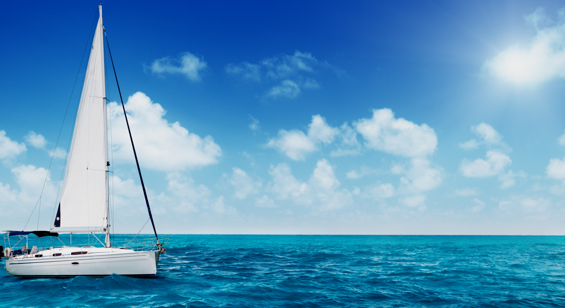Best time to sail : Late April to early November
Prevalent Wind : Variable
The English Channel is made for those who love navigation challenge, variable weather and want to test their pilotage skill. As the adage say, a smooth sea never made a skilled sailor !
The coast is splendid but the area is subject to large tidal range which is synonym of “go with the flows” meaning that you’ll have to wake up early to catch the tides. Also, a careful navigation is essential is this area.
Up on the north, a dense commercial traffic passes from Dover to French Ports. Coupled with tidal ranges, many main harbours are busy and by consequence, limit their access. All of them have good provision regarding leisure traffic but still supervise entry and exit with extrem carefully.
The south of the English Channel Area has the famous
Dunkerque
Not talking here about the movie from C. Nolan but the city. Dunkerque is a commercial port just 6 nm from the belgian border. Accessible in any condition, this city is famous for its history regarding the second world war. They are two marinas accessible to visitors and two others more for longer stay.
What we love : The fish market, the war museum
Gravelines
Located half distance between Dunkerque and Calais, this lovely city is worth visiting. This walled city was designed by Vauban and is a clear example of how cities was protected from invasion centuries ago.
What we love : The scenic wealth, the city walls
Calais
Similar to Dunkerque, Calais is a major port from the Northern France. This is the closest town to England and it’s also a main commercial route.
Yacht must have their engine running when leaving or entering the marina, even when sailing. Finally, Calais is an excellent way to enter inland France
Note on Calais – 2018: Due to the migrant crisis, security on the port is tighter than usual.
Note on the commercial route: Between Dunkerque and Calais, beware of the strong tides and the many ferry cruising.
Boulogne
The harbour is available under any weather condition. Boulogne is a major fishing port and is also called the “Côte D’opale capital”. This city, destroyed during the first world war is worth visiting as the old town walls and castle remained.
Fécamp
This marina is accessible in every weather condition except low tides. Every facility you need are also there. Fécamp is the first cod fishing’s port of France. A lot of famous people use to go to this port during holidays.
What we love: the Benedictine museum
Le Havre
We are entering in the historical area of WWII D-day beaches. Most of the towns and villages have been destroyed during the war then rebuild. This is also where the Seine Estuary – the route to Paris and Rouen.
Major yachting center, Le Havre is only 2 hours away from Paris which makes it a perfect destination for french people wanting to escape the capital for a weekend. The marina has a huge asset as it is one of the only deep sea leisure port accessible all the time. Le Havre is declared World Heritage Site by UNESCO.
Honfleur
Warning, this city is a must-do – a stunning beautiful port only a few miles away up on The Seine. The old-dock attracts many yachts thanks to its uniqueness. With more than 1000 years of history, Honfleur is classified as a “recommended detour” or “must-see” by most of the tourists tour. This Normandy lovely town will surprise you with its harbour, small tipical and half-timbered houses. Many good restaurants are located on the seaside and worth a try.
What we love : Saint Catherine’s Church
Deauville/ Trouville
Two marinas closed to each other accessible above half-tide. Deauville is a worldwide known city. From Hollywood’s movie stars annual retreat to its buzzing horses’ races, this seaside resort knows how to attract people. Nature lovers aren’t forgotten as stunning parks on the Mount Casiny will offer them a 360° view over the city.
What we love : the splendind casino which makes Deauville a very chic destination
Dives-sur–mer
This port is historically attached to UK’s history. This was the starting point where William The Conqueror left France for England to claim the throne. Nowadays, it’s quite difficult to imagine a large fleet setting off the calm city to conquer England. Dives-sur-mer (or “Dives” in short) has a great yachts harbour and still attract tourists wishing to dive into the dark age past of Normandy.
What we love : The medieval wooden market hall
source : https://blog.samboat.com/sailing-guide-france/#Part4:SailingArea:EnglishChannel






